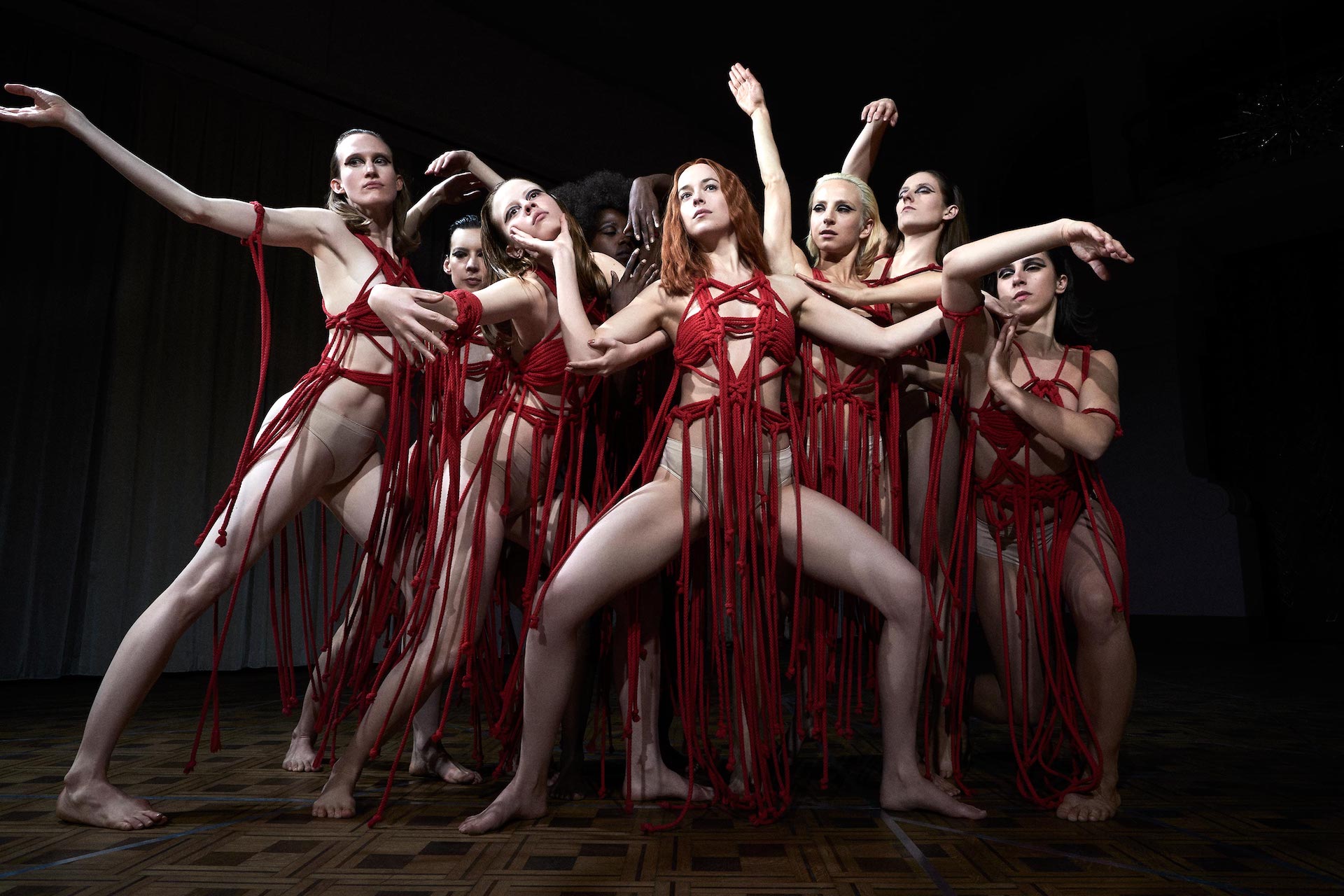Suspiria
by George Wolf
Seventies horror has had a damn good month.
Just weeks after David Gordon Green gave 1978’s Halloween the sequel it deserved, director Luca Guadagnino re-imagines 1977’s giallo classic Suspiria as a gorgeous rumination on the horror of being haunted by echoes of your past.
Wait, wasn’t the original about witches?
It still is, more than ever. Guadagnino and screenwriter David Kajganich (True Story, A Bigger Splash, the upcoming Pet Sematary remake) remove the guesswork about the dance academy coven in favor of a narrative much more layered, meaningful and bloody.
The building blocks remain the same. It is 1977 in “a divided Berlin,” when American Susie Bannion (Dakota Johnson, nicely moving the character from naivete to complexity) arrives for an audition with a world-renowned dance company run by Madame Blanc (Tilda Swinton, mesmerizing). Susie impresses immediately, and is soon given the lead in the company’s next production.
This “cover version” (The Tilda’s phrase, and valid) of Argento’s original lifts the veil on the academy elders early, via the diaries of Patricia (Chloe Moretz), a dancer who has fled the troupe in fear. While whispers paint Patricia as a radical member of the anti-fascist Red Army Faction, she tells psychotherapist Dr. Josef Kiemperer (also The Tilda, under impressive makeup) wild tales of witches and their shocking plans.
Guadagnino continues to be a master film craftsman. Much as he draped Call Me by Your Name in waves of dreamy romance, here he establishes a consistent mood of nightmarish goth. Macabre visions dart in and out like a video that will kill you in 7 days while sudden, extreme zooms, precise sound design and a vivid score from Thom Yorke help cement the homage to another era.
But even when this new Suspiria is tipping its hat, Guadagnino leaves no doubt he is making his own confident statement. The color scheme is intentionally muted, and you’ll find no men in this dance troupe, serving immediate notice that superficialities are not the endgame here.
Guadagnino’s stated goal of “de-victimizing” women in this film shows early and often. They move in strong solidarity both onstage and off, dancing with a hypnotic power capable of deadly results. In fact, most of the male characters here are mere playthings under the spell of powerful women, which takes a deliciously ironic swipe at witch lore as it creates a compelling bookend to what’s going on away from the dance academy.
Dr. Kiemperer, still searching for his wife missing since the end of WWII, becomes a personal illustration of Germany’s struggle with its Nazi legacy. When paired with Patricia’s rumored involvement in the “German Autumn” uprising of ’77, we get two important pillars of an epilogue that, admittedly, some may find a head-scratching overreach.
But after the finale that precedes that epilogue, the bigger problem may be breath-catching. A glorious celebration of the grotesque, it explodes into a cathartic mix of Ken Russell’s The Devils and GOT‘s Red Wedding that more than affirms the film’s intense, obsessive build. Guadagnino has thrown so much at us, he knows we deserve a payoff and damn, he delivers one.
It cements a vision of Suspiria that’s as ambitious and it is uncompromising, one that explores different definitions of horror while ultimately delivering more outright shocks and shivers than Argento ever attempted. Who knew a silly witch story could support so much mind-fuckery?
His name is Luca.

One thought on “Dance Macabre”